To jump straight to the 68-point digital business launch checklist, go here.
–
Starting an online business isn’t about fancy websites or complex systems.
It’s about solving real problems for real people, and doing it in a way that traditional businesses simply can’t match.
Let me walk you through the 10 advantages that make online businesses so compelling, plus give you a practical roadmap to get started.
1/ Your Startup Costs Will Make Traditional Business Owners Weep
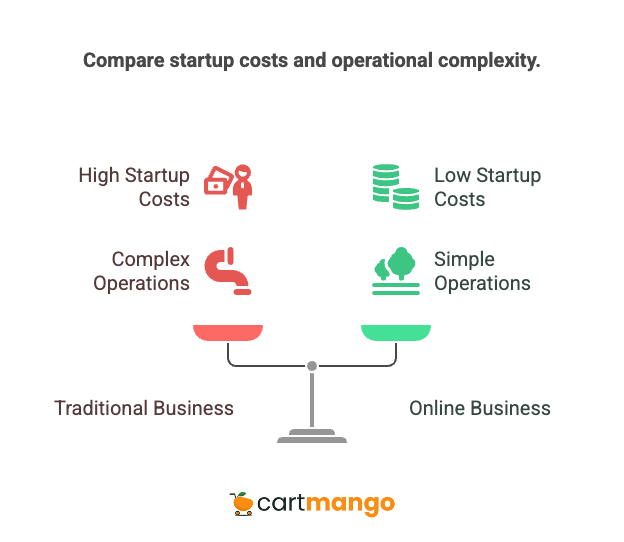
I remember sitting across from a friend who just opened a restaurant. He was staring at a pile of bills that made my stomach turn. Rent deposits, equipment, permits, staff training.
The number? $180,000 before he sold his first meal.
Compare that to online businesses.
You can launch for as little as $300-$1,000.
Here’s the breakdown that shocks many peeps:
Cost Category | Online Business | Traditional Business |
|---|---|---|
Initial Setup | $300-$1,000 | $10,000-$50,000+ |
Monthly Rent/Location | $0 | $1,000-$5,000+ |
Monthly Software & Tools | $50-$200 | $50-$150 |
Utilities & Services | $30-$100 | $200-$800+ |
Staff Requirements | 0-1 person | 3-10+ people |
The math is brutal for traditional businesses. While they’re bleeding cash on overhead, you’re investing in what actually matters: your product and your customers.
For a more detailed cost calculation, try this resource from SBA.
2/ Your Market Isn’t Your Neighborhood Anymore
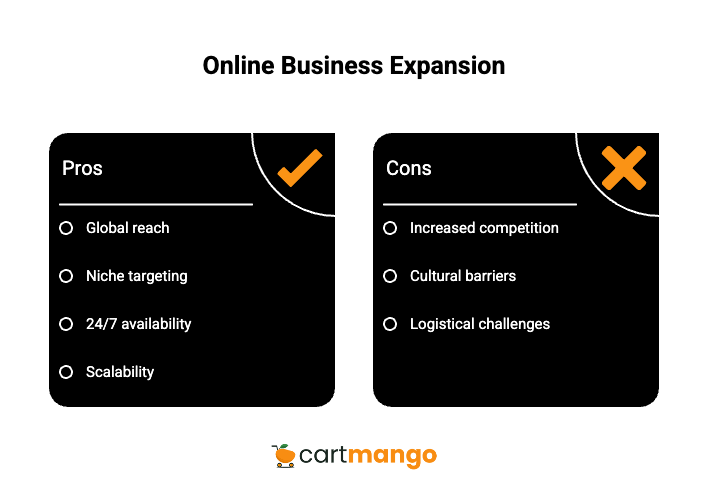
Traditional businesses are prisoners of geography. Your coffee shop serves whoever walks by. Your consulting practice reaches whoever knows you locally.
Online businesses? The entire world becomes your customer base.
Cross-border commerce has exploded as payment systems and logistics improved. I can sell a digital course to someone in Tokyo while I’m sleeping in Chicago.
Think about it. Instead of competing with every business in your town, you’re finding people who specifically need what you offer. The pool of potential customers grows from thousands to billions.
This shift changes everything about how you think about your business.
3/ You Never Have to Close
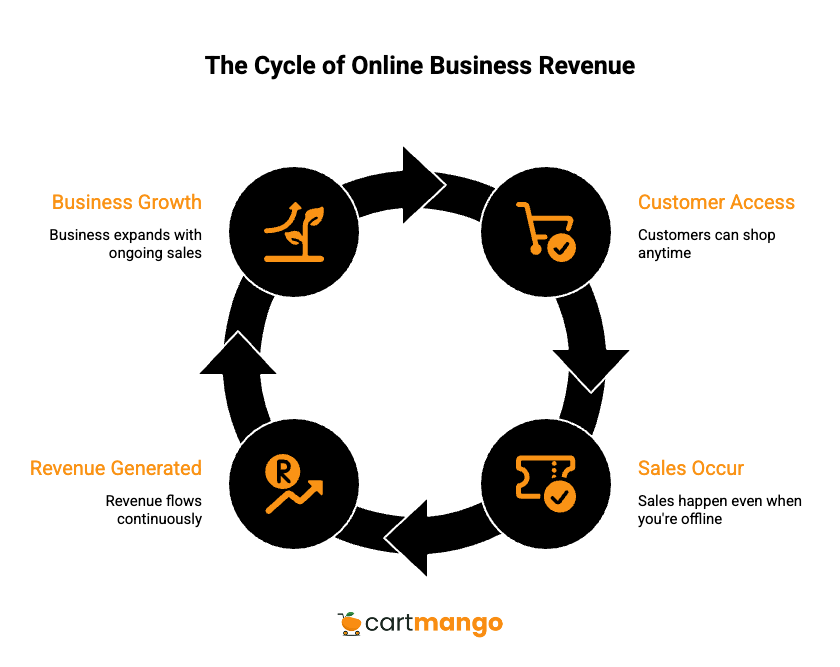
My friend runs a bakery. She opens at 6 AM and closes at 8 PM, exhausted and flour-covered. Her revenue stops the moment she locks the door.
Online businesses don’t sleep.
The convenience of shopping from home has fundamentally changed customer expectations. People want to buy when they want to buy, not when you’re open.
- Your website works while you’re at dinner with friends.
- Your course sells while you’re on vacation.
- Your consulting booking system captures leads at 2 AM.
The revenue never stops flowing. That’s perhaps the most liberating feeling I can describe.
4/ Work From Your Kitchen Table (Or Anywhere You Please)
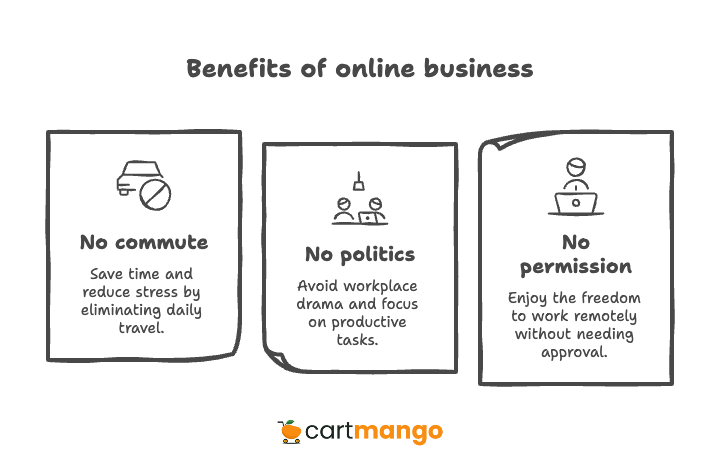
Location independence sounds like a buzzword until you live it. I’m writing this from my kitchen table, wearing my trusty shorts, with my warm coffee.
My peer Sarah runs her coaching business from different countries every few months. Her clients don’t care where she is as long as she delivers results.
Online businesses have fundamentally changed work-life balance expectations. You set your schedule. You choose your environment.
- No commute.
- No office politics.
- No asking permission to work from home.
5/ Scale Without the Growing Pains
Traditional businesses scale linearly.
More customers means more staff, more space, more inventory. The costs multiply with every new customer.
Online businesses scale exponentially.
Your digital product serves one customer or one thousand customers with the same effort.
Look at these timelines:
Business Model | Startup Cost | Time to Profit | Scalability | Best For |
|---|---|---|---|---|
E-commerce Store | $500-$2,000 | 12-36 months | High | Product sellers |
Digital Products | $100-$500 | 12-24 months | Very High | Content creators |
Online Courses | $200-$1,000 | 12-24 months | High | Experts/Educators |
Consulting | $50-$300 | 4-12 months | Medium | Service providers |
Digital products have the highest scalability because there’s no marginal cost per additional customer. You create an online course once, but it can generate income for years.
6/ Inventory Headaches Become Someone Else’s Problem
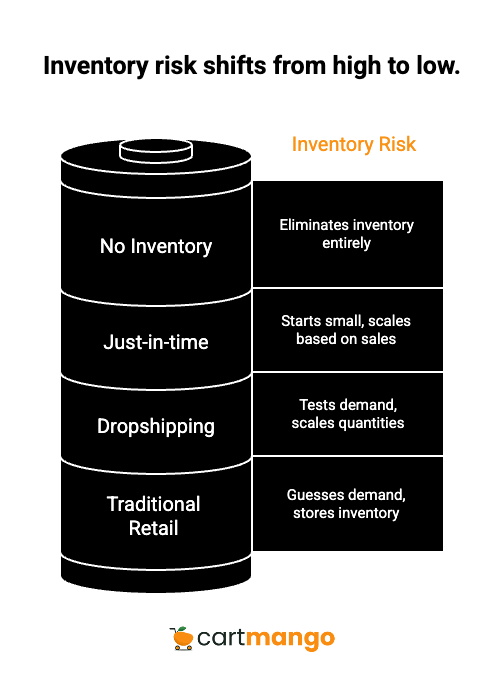
Traditional retail means guessing what customers want, buying inventory, storing it, and hoping it sells before it becomes worthless.
Online businesses flip this model.
Dropshipping and just-in-time inventory have eliminated the biggest risk in retail: being stuck with unsold products.
You can test demand before buying inventory. You can start with small quantities and scale based on actual sales. Some business models eliminate inventory entirely.
The stress of staring at a warehouse full of products nobody wants? Gone.
7/ Every Click Tells You Something
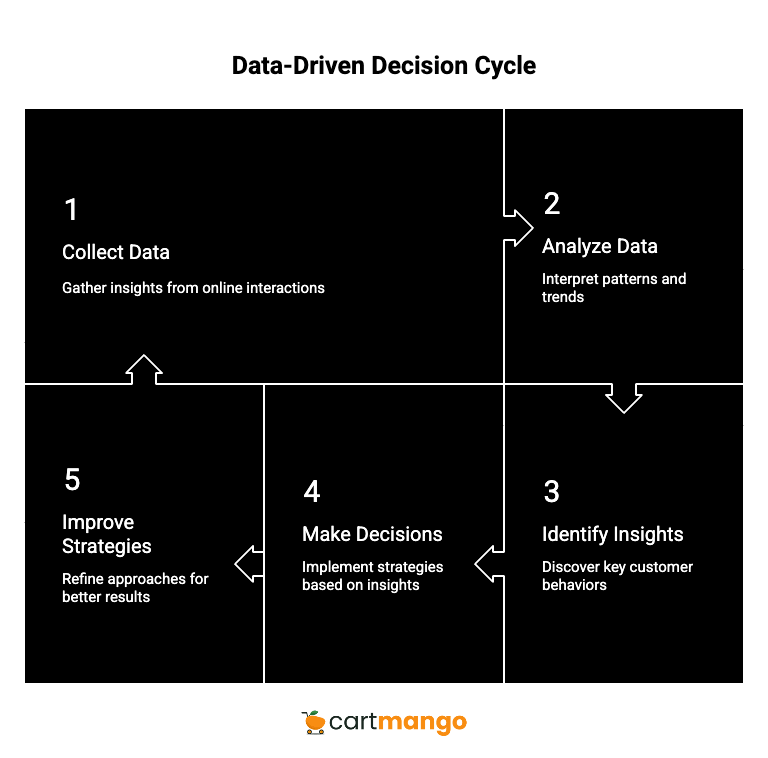
Traditional businesses operate blindfolded.
You might know how many people bought something, but you have no idea what they looked at first, what almost made them leave, or why they chose you over competitors.
Online businesses can see most things. Google Analytics gives you data that brick-and-mortar stores can only dream about.
- You know which products people view most.
- You see where customers get confused.
- You track which marketing messages actually work.
This data becomes your competitive advantage. You make decisions based on facts, not hunches.
8/ Customer Service That Actually Serves
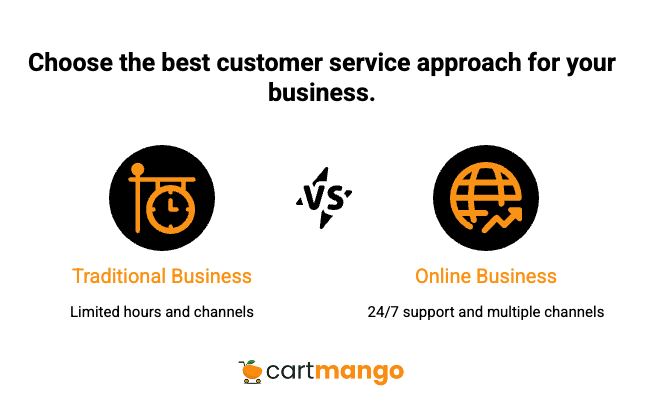
Traditional businesses limit customer service to business hours. Online businesses can provide support through multiple channels, at any time.
Customers expect instant responses and multiple communication options. Live chat, email, social media, video calls. You can meet customers where they are.
I’ve seen businesses resolve customer issues in minutes through chat, creating unmatched loyalty.
The personal touch doesn’t disappear online. It gets better.
9/ Your Business Helps Save the Planet
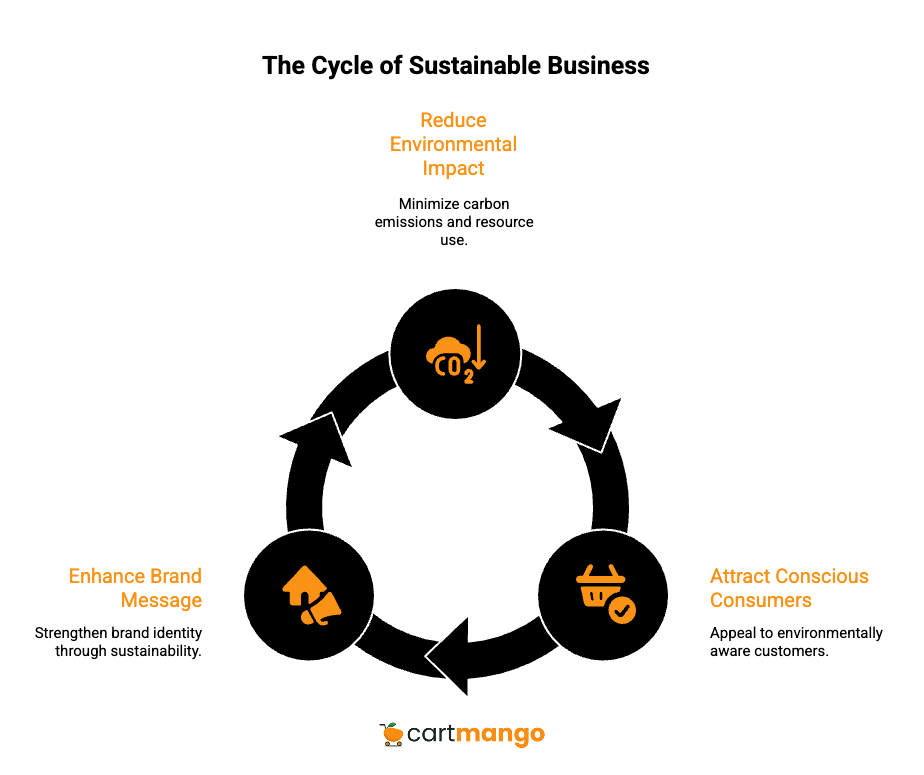
Every traditional business location requires construction, utilities, parking, and daily commutes from employees and customers.
The environmental impact adds up quickly.
Online shopping can reduce carbon emissions by up to 50% compared to traditional retail (source). No physical infrastructure. No commute. No parking lots.
Environmentally conscious consumers notice this difference. They’re willing to support businesses that align with their values.
Your business model becomes part of your brand message.
10/ Crisis-Proof Your Future
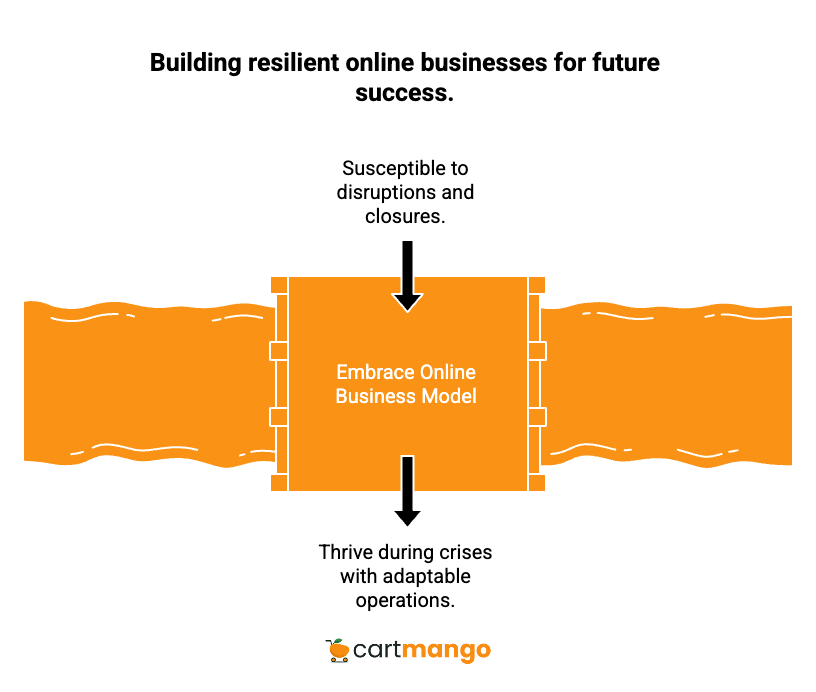
2020 taught us that businesses need to adapt quickly to survive.
Online businesses were already built for remote work, contactless transactions, and supply chain flexibility.
- When physical stores were closing, online businesses were growing.
- When travel stopped, digital services thrived.
- When people couldn’t leave home, e-commerce became essential.
This resilience isn’t just about pandemics. Economic downturns, natural disasters, and industry disruptions affect online businesses differently than traditional ones.
You’re building something that can weather storms that sink other businesses.
Success Stories of Online Businesses
CrowdTamers: From Zero to $540,000 Annually
Trevor Longino started CrowdTamers with absolutely nothing. Zero investment. Just his marketing expertise and a laptop.
According to Starter Story, Trevor built a marketing consultancy that now generates $540,000 per year helping startups reach their first million in revenue.
No fancy office. No expensive marketing budget. Just valuable knowledge shared consistently.
The business grew from 2 to 5 employees in two years. Trevor’s team works remotely, serving clients worldwide. He’s living proof that you can build a substantial business by solving real problems online.
FilterGrade: Turning Creativity Into $360,000 Per Year
Mike Moloney saw creative professionals struggling to find quality digital assets. Photoshop presets, video templates, color grading tools. The existing marketplaces weren’t serving creators well.
So he started FilterGrade in 2013 with just $1,000. The platform now generates $360,000 annually with over 450,000 monthly users.
He built a community around creative tools, then gave that community exactly what they needed.
- No warehouse.
- No inventory.
- No physical products.
- Just digital assets that creators could download instantly anywhere in the world.
–
Both Trevor and Mike started with expertise, not capital. They built audiences by helping people, then created businesses around that value. Their stories show exactly how the advantages I’ve outlined translate into real revenue.
Understanding the Online Store vs Traditional Business Landscape
When you’re deciding between starting an online store versus a brick and mortar business, the differences go far beyond just having a physical location. Every business online operates in the online world with different benefits than offline business models.
A traditional retail store serves a local audience within walking or driving distance. Your physical storefront becomes your biggest asset, but also your biggest expense. The retail space, physical space, and overhead costs eat into profits before you sell your first product online.
Conducting business online flips this model completely. You’re not limited to customers who can visit your physical location. Instead, you can reach customers anywhere with an internet connection. Your global audience grows from hundreds to millions, allowing customers to discover you through the internet at any time.
The online shopping experience offers different benefits than browsing a physical storefront. Online customers can shop online at 2 AM in their pajamas. This cost effective approach eliminates travel time and parking hassles. This convenience factor drives much of the growth we see in online markets today.
Small businesses particularly benefit from selling online because the minimal startup costs and low operating costs make entry possible. Where a retail space might require $50,000 in upfront costs, an ecommerce website can launch for under $1,000.
Navigating the Challenges Every Online Business Faces
While we’ve covered the numerous benefits of running services online, every business model has advantages and disadvantages. Online selling comes with unique challenges that brick and mortar business owners never face.
Security risks top the list of concerns. When you’re processing payment details and storing customer data, data breaches become a real threat. Your customers trust you with their payment processing, and any technical difficulties can destroy that trust instantly.
Customer behavior changes dramatically in digital environments. The customer experience becomes harder to manage when you can’t see facial expressions or body language. Understanding shopping preferences means analyzing customer engagement through clicks and purchase patterns instead of direct conversation.
The biggest advantages of online business can also create challenges. That global audience you can reach? They all have different expectations, currencies, and shopping habits. Managing different benefits across international markets means dealing with time zones, shipping, and multiple payment methods.
Digital marketing becomes essential but complex. Search engine optimization, social media marketing, and email marketing all require different skills than traditional advertising. You need to master multiple channels to effectively reach customers and achieve your business goals.
Despite these challenges, the significant advantage of being able to conduct business without the massive overhead costs of physical locations makes online ventures attractive. The key is understanding both the benefits and obstacles before you start selling products. This knowledge helps you set realistic business goals and prepare for increased sales through strategic planning.
BONUS: Launch Checklist for Digital Creator Businesses
Phase 1: Quick Market Validation (Week 1-2)
- Define Your Offer
- Identify a specific problem you can solve for your audience.
- Write a clear one-sentence description of your solution.
- Set a price for your offer.
- Choose your format: online course, coaching, digital template, or consulting session.
- Listen and Learn in Communities
- Join relevant online communities or forums (but don’t promote).
- Observe the most common questions, complaints, and needs.
- Take notes on the language people use to describe their struggles.
- Participate by answering questions and offering value (never pitch your offer).
- Use polls or surveys (if allowed) to clarify what people want most.
- Validate with Your Network
- Reach out to friends, colleagues, or past clients who fit your target audience.
- Ask if they (or someone they know) struggle with the problem you solve.
- Offer to chat, listen, and learn about their needs (don’t sell unless they ask).
- If someone expresses genuine interest, offer your solution and ask for feedback.
Phase 2: Get Your First 3 Customers (Week 3-12)
- Relationship-First Outreach
- Continue building relationships in communities by being helpful and consistent.
- Share your expertise on your own social media profiles or blog (not in groups).
- If someone privately asks for help, share your offer one-on-one.
- Ask for honest feedback after delivering value.
- Create Value on Your Own Channels
- Publish helpful content on your website, email list, or personal social profiles.
- Share stories, tips, or case studies relevant to your audience’s needs.
- Invite people to join your email list for more value (never spam).
- If you have an audience, announce your offer and invite early adopters.
- Manual Sales and Delivery
Phase 3: Set Up Minimal Tech (AFTER You’ve Made 5+ Sales)
- Invest in Infrastructure
- Buy a domain name and set up a simple website or landing page.
- Set up a business email address.
- Use a payment processor for easier checkout.
- Set up Google Analytics to track website visits.
- Automate Delivery (When Needed)
Phase 4: Fulfill and Gather Feedback (Month 3-6)
- Deliver Your Promise
- Create and deliver your product or service based on real customer needs.
- Focus on results, not perfection.
- Over-deliver for your first customers.
- Collect Feedback
- Ask each customer what they liked most and what could be improved.
- Invite testimonials if they’re happy.
- Use their words and feedback to refine your messaging and offer.
Phase 5: Gradual Improvement (Year 1-2)
- Iterate Based on Feedback
- Refine your offer and content based on what buyers actually want.
- Adjust pricing and delivery as needed.
- Create a simple FAQ from common questions.
- Grow Organically
- Encourage referrals by delivering great results.
- Use testimonials and word of mouth to attract more customers.
- Continue showing up in communities as a helpful, trusted resource.
Red Flags to Stop & Pivot:
- No one wants to pay after 50+ genuine conversations.
- People say “great idea” but never buy.
- You can’t explain your value clearly.
- You’re spending more time on setup than talking to real people.
Green Lights to Keep Going:
- People pay without much convincing.
- Customers refer others without being asked.
- You’re getting more demand than you can handle.
- People ask when you’ll have more offerings.
Key Principles:
- Give first, ask later (help without expectation).
- Build trust before ever mentioning your offer.
- Respect every community’s rules and culture.
- Focus on genuine relationships, not sales tactics.
- Let your results and reputation attract your first buyers.
This approach keeps you safe, respected, and effective in any online community. It’s slower, but it’s rea. And it works.
Why 2025 Is Your Year to Start Online
The barriers have never been lower. The tools have never been better. The market has never been more ready.
Traditional businesses require months of planning and huge upfront investments. Online businesses let you test ideas in weeks with minimal risk.
- You can start next weekend.
- You can validate demand in two weeks.
- You can have paying customers in two months.
But only if you focus on customers first, systems second.
The advantages are clear: lower costs, global reach, 24/7 sales, location independence, easy scaling, better data, superior customer service, environmental benefits, and crisis resistance.
Trevor proved it with CrowdTamers. Mike proved it with FilterGrade. The checklist gives you the roadmap.
The only question left is whether you’ll use it?
Related
- Sellfy vs Payhip: The Recurring Revenue Prison (2026)
- Podia vs Gumroad: The Recurring Revenue Handcuffs (2026)
- SendOwl vs Gumroad: The Recurring Revenue Black Hole (2026)
- Gumroad vs Sellfy: The Vendor Lock-in Cage (2025)
- Gumroad vs Payhip: The Hidden Trap for Creators (2025)
- ThriveCart vs SamCart – The Subscription Hostage Trap (2025)
- 8 ThriveCart Alternatives & The Lifetime Pricing Paradox (2025)
- 8 SamCart alternatives + Subscription hostage (2025)
- The GENTLE Method: Soft marketing for creators
- How Far in Advance Should You Promote a Webinar?
